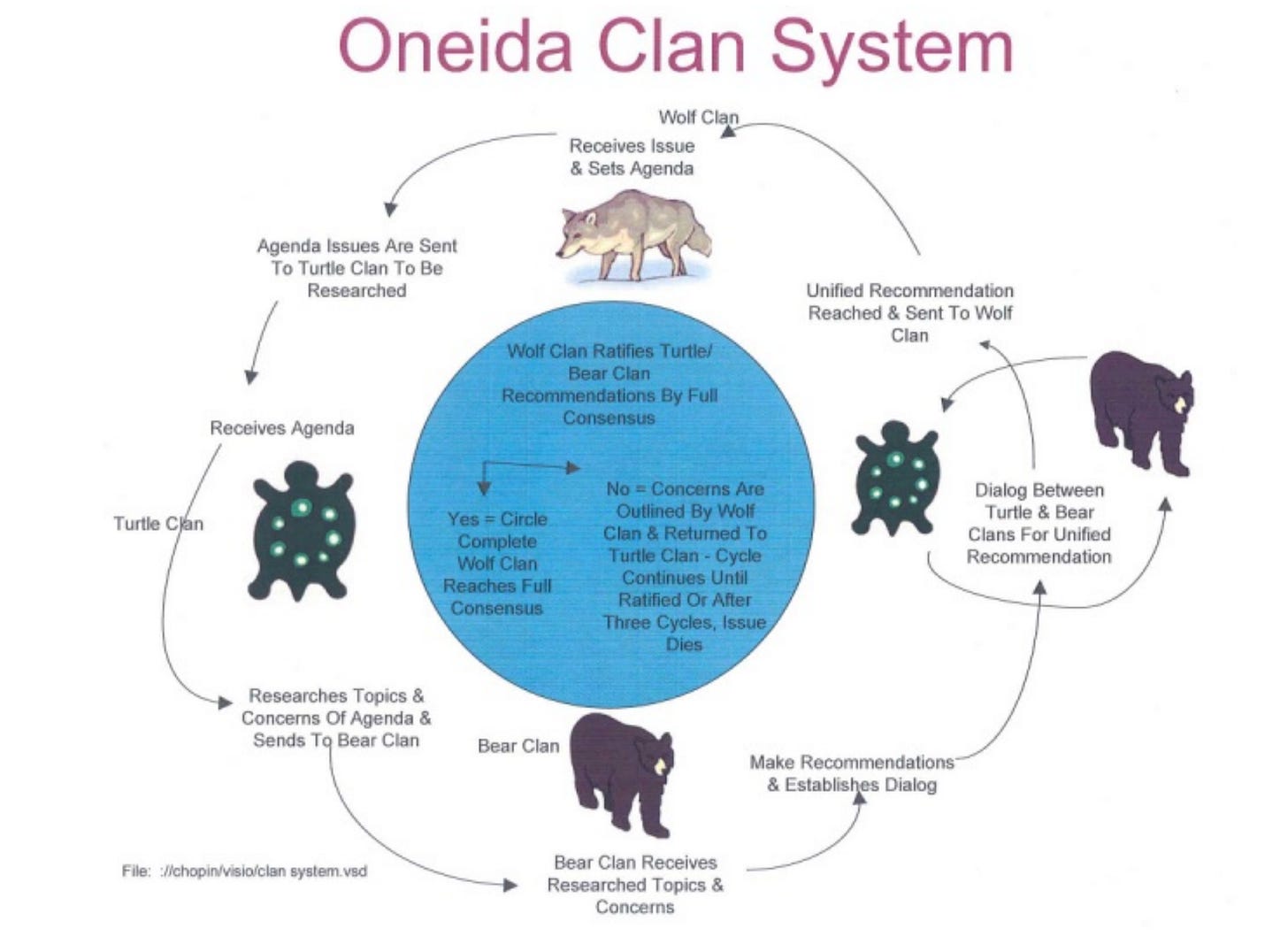🌿🧭🌳 OD55: Pathfinders 🐺 Problem Formulators 🐢 Problem Solvers 🐻 ∙ Systems Change ∙ Intro to Chaos Theory
Join 4,000+ others who get our bi-weekly Strategy & Organization resources on Business Strategy ∙ Org Design ∙ Org Development and adjacent fields like Change ∙ Foresight ∙ Complexity ∙ Leadership and others.
#practice
Jarche.com: Looking to improve decision making in your team? We found an interesting practice that might inspire you:
In the book Systems Thinking: Managing chaos and complexity, J. Gharajedaghi provides an example of decision-making by indigenous people of North America. The Six Nations of the Iroquois Confederacy (Mohawk, Oneida, Onondaga, Cayuga, Seneca, and Tuscarora) had given specific roles to its member tribes, namely Wolves (Pathfinders), Turtles (Problem Formulators), and Bears (Problem Solvers). Solving problems went like this:
Wolves — Set direction, and identify relevant issues
Turtles — Define the problems
Bears — Generate alternatives and recommend solutions
Turtles — Check on the potency of the recommended solutions, and only these
Wolves — Integrate only the recommended solutions, keep the records, communicate the decisions
We also found this diagram on the same topic (source):
Norden.org: Want to improve how you lead and effect change in your organization? Here is some inspiration from the Cookbook for Systems Change - Nordic innovation strategies for sustainable food systems.
We’re picking just a few words from their glossary to make you a bit curious:Experiment: A low-cost, low-risk way of learning how a mission can be solved
Grand challenge: A complex, societal problem that is currently impeding sustainable development
Entry point: Indicates where to intervene in a food system, identifying places where strategic changes can help tackle grand challenges
Portfolio approach: Selecting individual experiments according to both individual merit and their complementarity with other experiments (synergies and knowledge gaps)
Demonstrator: A method for planning and co-ordinating (“orchestrating”) a portfolio of experiments
+ this insightful diagram:Figure 2. A mission approach
An example of how missions tackle grand challenges by exploiting entry points and breaking challenges down into more concrete, actionable interventions, clustered into different demonstrators.
#reflect
“The single biggest problem in communication is the illusion that it has taken place.” George Bernard Shaw
#study
Rethinking Organizations: Ever wonder how chaos theory can help us better understand the organizations around us?
Here are some quotes from a nice 5 min intro about chaos & organizations:We are prone to think that if we understand where our organization stands today and how things work, we can calculate the outcome, design the system, and control the ‘uncertainty.’
Chaos Theory suggests otherwise. Here is an example of a simple double pendulum. We know how the law of motion works, but it is not enough for us to calculate the pendulum’s exact position in a given moment. That is because the system is chaotic. And with even small changes in the initial system, the results will differ significantly.
The reason why the pendulum acts this way is called sensitive dependence on initial conditions.
#practical_guides
Sense & Change guides that might be useful:
Guide to Team Chemistry1 (paid)
Guide to Dynamic Stakeholder Mapping2 (paid)
Guide to Personal Strategy Sprint3 (free)
Guide to Taming the Information Overload Dragon (coming soon)
Thanks for reading
This newsletter is curated by Raluca and Bülent Duagi, the Sense & Change team.
As Strategy & Organization professionals, we're using systems thinking and behavioral science to advise leadership teams in tech companies to make their organizations more effective.
Our professional mission and intended legacy is:
Creating and sharing sustainable knowledge that helps people deal with the complex challenges they (will) face.
Team Chemistry - work in progress for v2: practical examples from 2 teams that have used the Team Chemistry framework
Dynamic Stakeholder Mapping - work in progress for v3: step-by-step walkthrough of dynamic mapping a strategic initiative, product development, B2B business development and career navigation
Personal Strategy Sprint: Part of the Personal Strategy exploration






